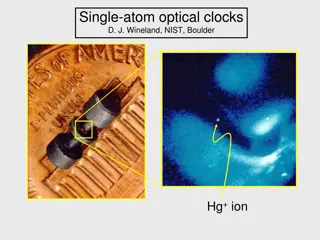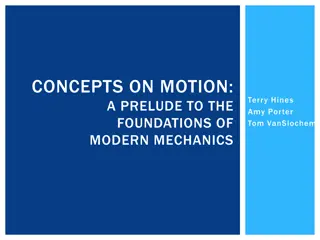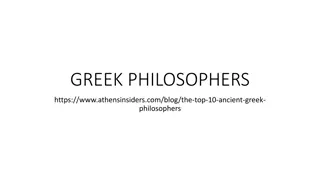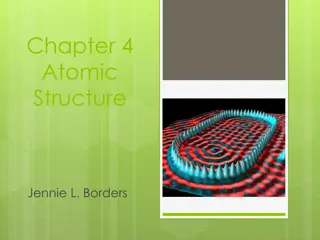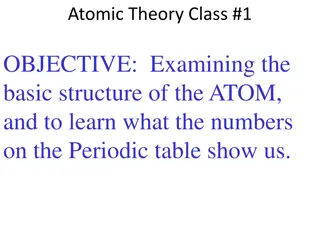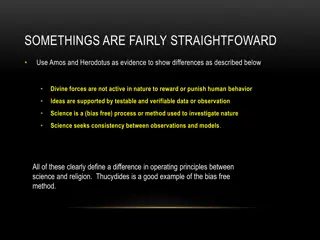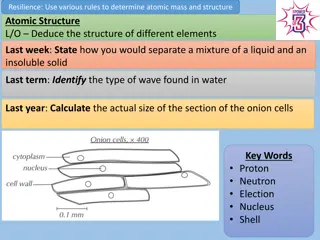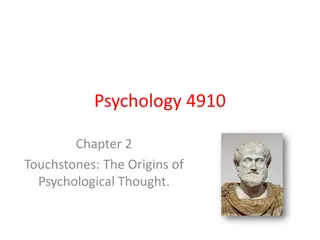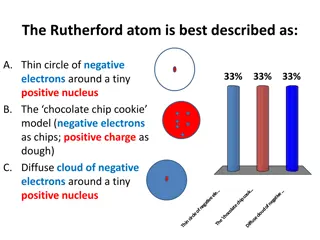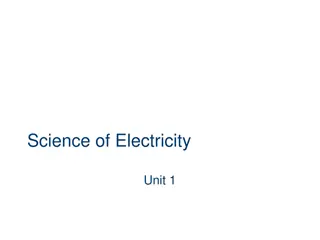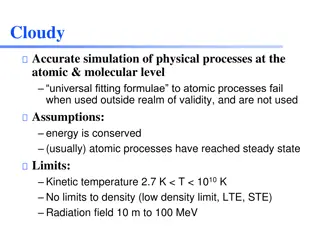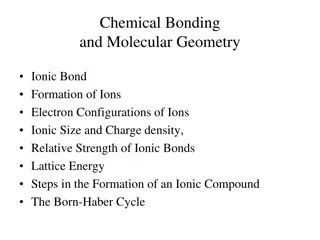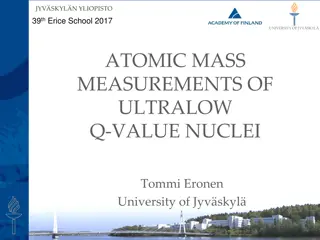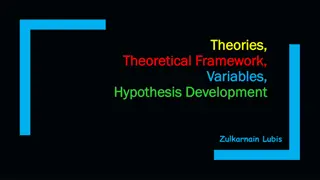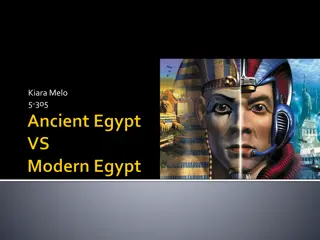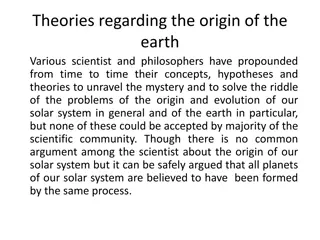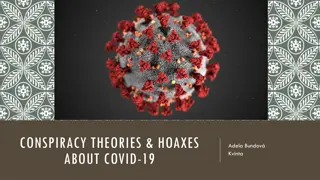Understanding Atomic Structure: The Journey from Ancient Philosophers to Modern Theories
Exploring the evolution of atomic theory from ancient times to John Dalton's contributions, the concept of indivisible atoms forming elements, atomic spectra of hydrogen, and Bohr's atomic model. Delve into the limitations of Bohr's model and the complexities of multi-electron atoms.
Download Presentation

Please find below an Image/Link to download the presentation.
The content on the website is provided AS IS for your information and personal use only. It may not be sold, licensed, or shared on other websites without obtaining consent from the author. Download presentation by click this link. If you encounter any issues during the download, it is possible that the publisher has removed the file from their server.
E N D
Presentation Transcript
Arts,Science and Commerce College Mokhada ATOMIC STRUCTURE
ATOMIC STRUCTURE 1.INTRODUCTION The word atom in Greek means indivisible, i.e. an ultimate particle which subdivided. This idea of all matter ultimately consisting of extremely conceived by ancient philosophers. The old concept was put on firm footing by John Dalton with his atomic theory that was developed by him during the years 1803 1808. cannot be further small Indian particles and was Greek
Daltons Atomic Theory Every element is composed of extremely small indestructible particles called atoms Atoms of any one element are all similar but they differ from atoms of another element. Atoms of each element are fundamental particles, have a characteristic mass but do not have any structure. Atoms of various elements take part in a chemical reaction to form compound. In any compound, the relative number and kinds of atoms are constant.
ATOMIC SPECTRA OF HYDROGEN Emission spectrum Absorptions spectrum It gives bright lines (colored on the dark background. Radiations from emitting source are analyzed by the spectroscope. It gives dark lines on the bright background. It is observed when the white light is passed through the substance and the transmitted radiations are analyzed by the spectroscope These are always discontinuous. It may be continuous (if source emits white light) and may be discontinuous (if the source emits colored light).
Atomic Spectra of Hydrogen Spectral Series Appearing Region Value of n1 Value ofn2 Lyman series Balmer series Paschen series Brackett series Pfund series Humphrey series Ultraviolet region Visible region Infrared region Infrared region Infrared region Far-infrared region 1 2 3 4 5 6 2, 3, 4, 5, .. 3, 4, 5, 6, .. 4, 5, 6, 7, .. 5, 6, 7, 8, .. 6, 7, 8, 9, .. 2, 3, 4, 5, ..
BOHRS ATOMIC MODEL The atom has a nucleus where all the protons and neutrons are present. The size of the nucleus is very small. It is present at the center of the atom. Negatively charged electrons are revolving around the nucleus. When the electron remains in any one of the stationary orbits, it does not lose energy. Each stationary orbit is associated with a definite amount of energy
Limitations of Bohrs Model It does not explain the spectra of multi-electron atoms. . Bohr s theory does not explain the fine spectra of even the hydrogen atom. Spectral lines split into a group of inner lines under the influence of magnetic field (Zeeman effect) and electric field (Stark effect); but, Bohr s theory does not explain this. Bohr s theory isnt in agreement with Heisenberg s uncertainty principle.
Principal Quantum Number This is denoted by n, an integer. The values of n are from 1 to n. n = 1 K Shell n represents the major energy shell to which an electron belongs. The values of n signify the size and energy level of major energy shells. Angular momentum can be calculated using principal quantum number. As the value of n increases, the energy of the electron increases and thus, the electron is less tightly held with nucleus.
Azimuthal Quantum Number This is denoted by l. The values of l are from 0 to (n 1) l = 0, s-sub-shell, spherical l = 1, p-sub-shell, dumbbell For a given value of n, total values of l are n. The values of l signify the shape and energy level of sub-shells in a major energy shell. The angular momentum of an electron in an orbital is given by nh/2 . The energy level for sub-shells of a shell shows the order: s < p < d < f
Magnetic Quantum Number Denoted by ml, an integer. The values of mllie from l through zero. Total values of mlfor a given value of n = n2. Total values of mlfor a given value of l = (2l + 1) The values of mlsignify the possible numbers of orientations of a sub-shell. In the absence of magnetic field, the three p-orbitals are equivalent in energy and are said to be threefold degenerate, i.e. sub sub-shell (orbitals) having same energy level are known as degenerate orbitals.
Spin Quantum Number The values of ms are + half and half. The values of ms signify the direction of rotation or spin of an electron in its axis during its motion. Number of radial nodes = (n l 1) Number of angular nodes = l Total number of nodes = (n l) Number of nodal planes = l
PAULIS EXCLUSION PRINCIPLE The principle states that no two electrons in an atom can have the same set of all the numbers. In other words, no orbital can have more than two electrons. Conclusion: (a)The maximum capacity of a main energy shell is equal to 2n2electrons. (b)The maximum capacity of a sub-shell is equal to 2(2l + 1) electrons. (c) Number of sub-shells in a main energy shell is equal to the value of n. (d)Number of orbitals in a main energy shell is equal to n2. (e)One orbital cannot have more than two electrons. If two electrons are present, their spins should be in opposite directions.
AUFBAU PRINCIPLE . The sub-shell of the lowest energy is filled up first, then the next sub-shell of higher energy starts filling. The sequence in which various sub-shells are filled is the following: 1s, 2s, 2p, 3s, 4s, 3d, 5s, 4d, 5s, 4d, 5p, 6s, 4d, 5d, 6p, 7s, 5f, 6d, 7p
HUNDS RULE OF MAXIMUM MULTIPLICITY It states that electrons are distributed among the orbitals of sub-shell in such a way as to give the maximum number of unpaired electrons with parallel spins. This means that the orbitals available in a sub-shell are first filled singly before they begin to pair i.e. the pairing of electrons occurs with the introduction of the second electron in the s-orbital, the fourth electron in the p-orbitals, the sixth electron in the d-orbitals and the eighth electron in the f-orbitals.





